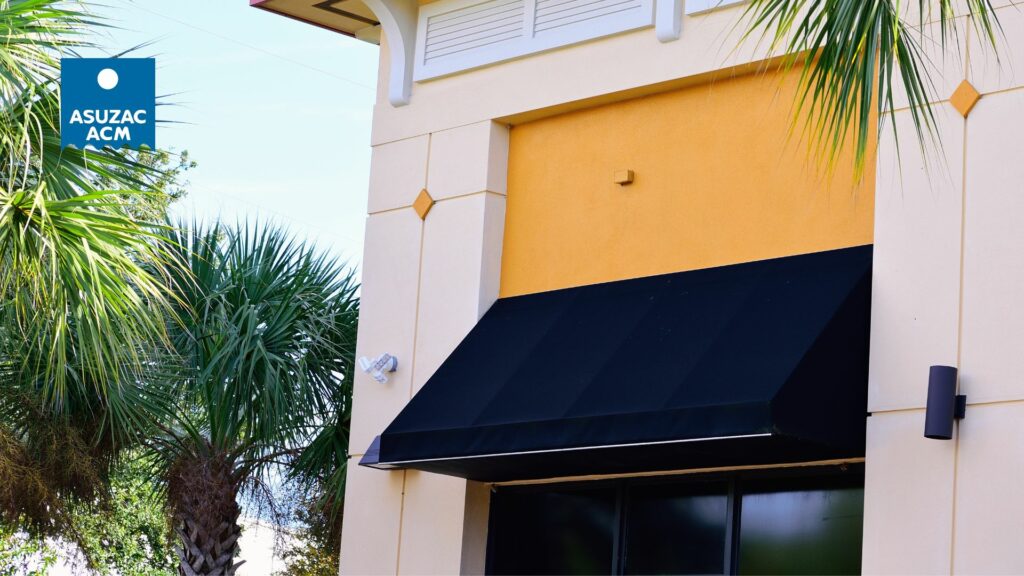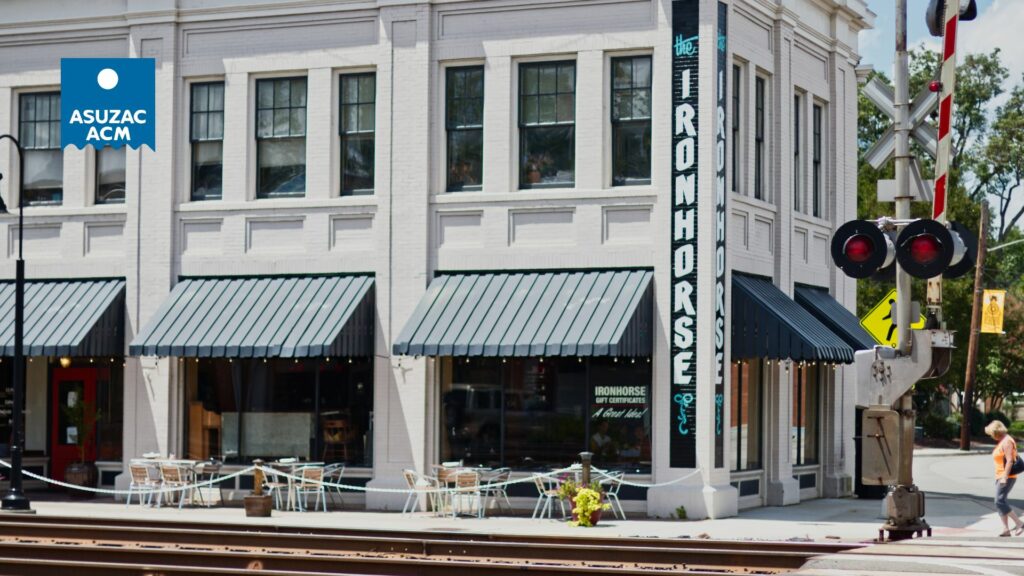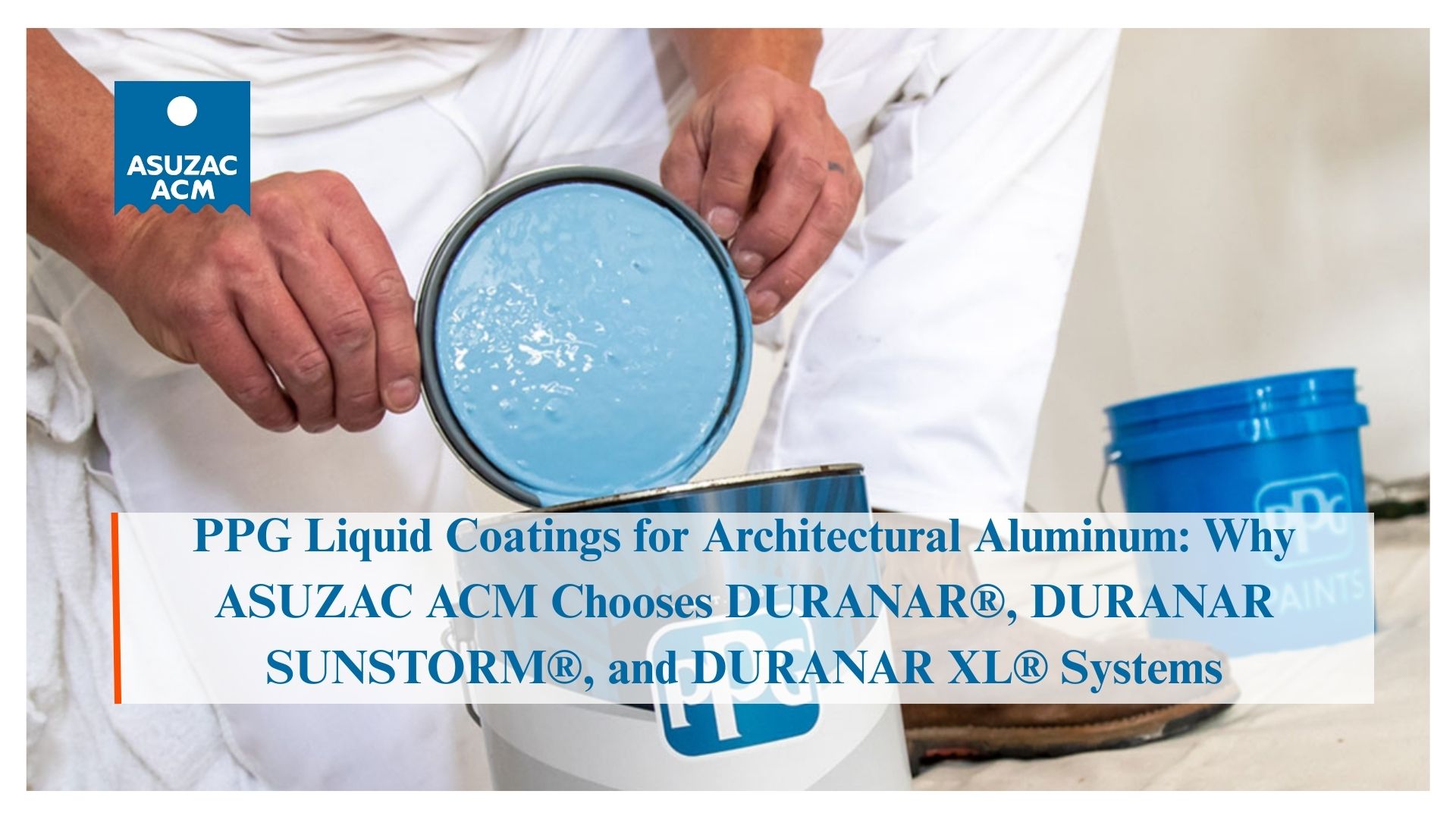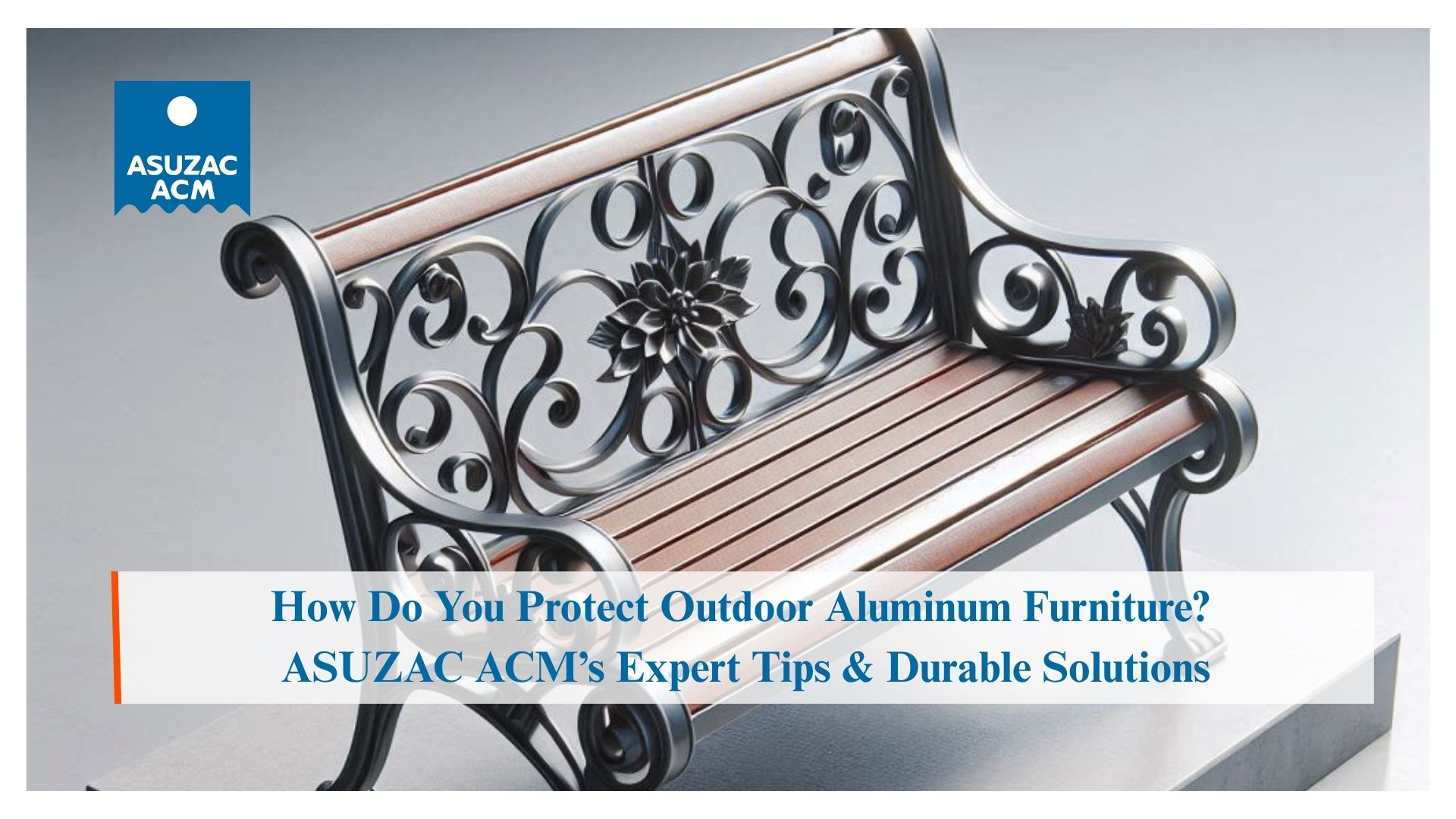
What is an Awning? Explore Types and Benefits
An awning is a versatile outdoor covering that enhances comfort and aesthetics by providing shade, weather protection, and additional usable space. Typically attached to a building’s exterior, awnings are used over windows, doors, patios, or sidewalks, offering a practical solution for homes, businesses, and public spaces. From ancient civilizations to modern designs, awnings have evolved into stylish, functional features that blend durability with customization.
At ASUZAC ACM, we are a leading aluminum casting manufacturer renowned for crafting high-quality outdoor products, including pergolas and aluminum components for awnings. Our innovative casting techniques deliver durable, weather-resistant solutions for global projects. In this article, we’ll answer the question “What is an awning?”, explore its types, materials, and benefits, and showcase how ASUZAC ACM’s expertise enhances outdoor spaces worldwide.
Table of Contents
What is an Awning?
An awning is a secondary covering, typically attached to a building’s exterior wall, designed to provide shade, protect against light rain, and reduce heat gain. Awnings consist of a lightweight frame—often made of aluminum, steel, or iron—supporting a covering material such as fabric (acrylic, polyester, vinyl, or cotton), aluminum sheeting, or mesh. The frame structure, which may resemble a truss or planar frame, ensures stability while keeping the design sleek and functional.
Awnings are positioned above windows, doors, or outdoor areas like patios or sidewalks. With added columns, an awning can extend further, becoming a canopy, as seen at hotel entrances. In commercial settings, awnings often double as signage, displaying business names, logos, or addresses while offering shade and weather protection.

ASUZAC ACM: Leading Aluminum Casting and Awning Component Supplier
ASUZAC ACM, a Vietnam-based subsidiary of the ASUZAC Group, is celebrated for our expertise in aluminum casting, driven by our innovative V-Process Technology. This vacuum-assisted casting method uses plastic film and vacuum pressure to create precise sand molds, producing aluminum components with smooth finishes, intricate details, and exceptional durability. While we are known for our aluminum pergolas, facades, bollards, and mailboxes, we also supply high-quality aluminum components for awnings, offering rust-resistant, low-maintenance solutions for outdoor designs.
Our notable projects include crafting aluminum facades for iconic buildings, durable garden lighting bollards, custom mailboxes for global apartment complexes, and stylish pergolas for luxury resorts. Our aluminum awning components have enhanced residential patios, commercial storefronts, and public spaces, delivering elegance and longevity. For custom awning designs or inquiries, visit our contact page.

Historical Roots of Awnings
Awnings have a rich history dating back to ancient civilizations. In ancient Egypt and Syria, woven mats shaded market stalls and homes, providing relief from the sun. In 50 BC, Roman poet Lucretius described linen awnings stretched over theaters, noting their “cracking roar” in the wind. The most iconic ancient awning was the velarium, a massive retractable shade system in the Roman Colosseum, made of linen, timber, and ropes, operated by sailors skilled in sailmaking. This system shaded about one-third of the arena, demonstrating early engineering ingenuity.
Types of Awnings
Awnings come in various types, each suited to specific needs and aesthetics. Below are the most common types:
Retractable Awnings
Retractable awnings are highly versatile, allowing users to extend or retract the covering as needed. They provide adjustable shade and protection, making them ideal for patios and decks.
- Benefits: Long lifespan due to retraction in harsh weather, customizable coverage, modern aesthetic.
- Ideal For: Homeowners seeking flexibility and seasonal use.
Stationary Awnings
Stationary awnings are fixed in place, often made of durable materials like aluminum or steel. They offer robust, year-round protection, commonly used in commercial settings.
- Benefits: High durability, low maintenance, withstands harsh weather.
- Ideal For: Businesses, storefronts, or areas needing constant coverage.
Freestanding Awnings
Freestanding awnings are not attached to a building, supported instead by posts or frames. They extend outdoor spaces where wall mounting isn’t feasible.
- Benefits: Versatile placement, cost-effective, expands usable space.
- Ideal For: Gardens, event spaces, or standalone patios.
Vertical Drop Awnings
Vertical drop awnings, or solar screens, extend downward to cover windows or patios, blocking direct sunlight while preserving views.
- Benefits: UV protection, reduces heat gain, easy to operate.
- Ideal For: Sun-exposed windows or enclosed patios.
Window and Door Awnings
Window and door awnings are smaller, often curved, coverings that protect specific entry points or windows from sun and rain.
- Benefits: Enhances privacy, prevents indoor heat buildup, adds decorative flair.
- Ideal For: Residential entrances or commercial doorways.

Awning Materials
Awning materials vary based on function and aesthetic goals:
- Acrylic Fabric: Durable, UV-resistant, available in vibrant colors, ideal for decorative awnings.
- Polyester/Vinyl: Weather-resistant, affordable, suitable for both residential and commercial use.
- Cotton: Soft, natural look but less durable, used for aesthetic-focused designs.
- Aluminum: Rust-resistant, withstands snow and wind, perfect for stationary or heavy-duty awnings.
- Mesh: Allows airflow while blocking sun, ideal for ventilation-focused designs.
ASUZAC ACM’s aluminum components, crafted with V-Process Technology, enhance awning frames and sheeting, offering durability and a sleek, modern finish.
Comparing Awning Types
Here’s a table comparing the main awning types:
Awning Type | Pros | Cons | Best For |
Retractable | Adjustable, long-lasting, stylish, protects against light rain. | Higher cost, requires occasional fabric maintenance. | Patios, decks, flexible spaces. |
Stationary | Durable, low maintenance, year-round protection, withstands harsh weather. | Less versatile, fixed coverage. | Commercial storefronts, permanent shade. |
Freestanding | Flexible placement, cost-effective, extends outdoor space. | May require more upkeep, less stable in high winds. | Gardens, event venues. |
Vertical Drop | UV protection, preserves views, easy to operate, reduces heat. | Limited coverage area, less decorative. | Windows, sun-exposed patios. |
Window/Door | Compact, decorative, protects entry points, prevents heat buildup. | Small coverage, fixed design. | Entrances, small windows. |
Benefits of Awnings
Awnings offer numerous advantages:
- Shade and Comfort: Reduce heat and glare, keeping outdoor and indoor spaces cooler.
- Weather Protection: Shield against light rain, UV rays, and wind, extending usable space.
- Energy Efficiency: Lower cooling costs by blocking sunlight from entering buildings.
- Aesthetic Appeal: Enhance building exteriors with customizable colors, patterns, and designs.
- Commercial Utility: Serve as signage, displaying business information while providing shade.
Considerations for Choosing an Awning
When selecting an awning, consider:
- Cost: Retractable awnings cost more due to size and motorized options, averaging $500–$4,000.
- Material: Aluminum is durable but retains heat; fabrics offer flexibility but require maintenance.
- Orientation: East/west-facing areas benefit from side-equipped awnings; north/south areas need simpler designs.
- Style: Match the awning’s look to your building’s architecture for cohesive aesthetics.
FAQ: What is an Awning?
Q: What is the purpose of an awning?
A: Awnings provide shade, reduce indoor heat, and protect against light rain and UV rays, enhancing comfort on patios, decks, or windows, with side-equipped models ideal for east/west exposures.
Q: What is the difference between an awning and a pergola?
A: Awnings are attached to buildings for shade and light rain protection, while pergolas are standalone or attached structures with open roofs, offering partial shade and aesthetic appeal.
Q: Why is it called an awning?
A: The term “awning” likely derives from Middle French “auvans,” meaning “sloping roof,” possibly linked to a Celtic root, later combined with the suffix “-ing” to describe the structure.
Contact ASUZAC ACM for Your Awning Needs
Ready to enhance your outdoor space with a durable awning? Our team at ASUZAC ACM is here to assist:
- Phone: +84 274 376 7136 | +84 093 707 6608
- Email: [email protected]
- Website: Contact Us
Conclusion: Transform Your Space with ASUZAC ACM’s Awning Solutions
An awning is a stylish, functional addition to any building, offering shade, weather protection, and aesthetic enhancement. At ASUZAC ACM, we leverage our expertise as a leading aluminum casting manufacturer to craft aluminum components for awnings that combine durability, elegance, and sustainability. Our V-Process Technology ensures precision and quality, making our solutions ideal for residential, commercial, and public projects worldwide.
Visit top casting aluminum manufacturer to explore our capabilities, check out our V-Process technology, or reach out via our contact page to create your dream awning with ASUZAC ACM today.





